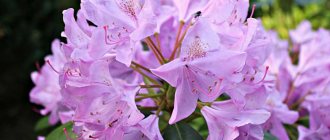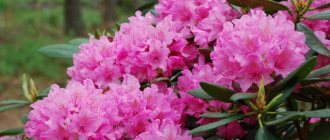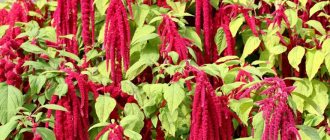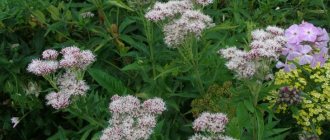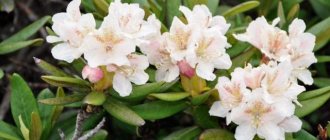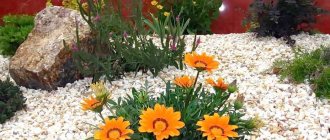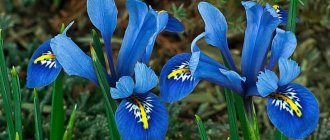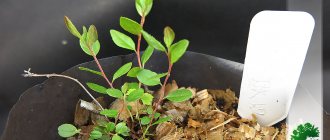Rhododendrons in the Urals, the care and planting of which require gardeners to take into account the climatic characteristics of the region, are common when creating landscape design. One of the determining factors is the choice of a suitable variety with good frost resistance and a long flowering period. The decorative nature of rhododendrons is associated with its lush and elegant flowering.
How to grow rhododendrons in the Urals
Rhododendron is grown in the Urals for its high decorative qualities. But the culture has its own characteristics: small annual growth, demanding care and participation of the gardener throughout the year.
For abundant flowering of rhododendron in the Urals, it is necessary to choose a suitable place, stock up on an acidic substrate, and carry out even watering and fertilizing.
Advice! For cultivation in the Urals, rhododendron varieties are selected that belong to zone 3-4 of frost resistance.
An important condition for growing ornamental shrubs in the Urals is its shelter for the winter: both from frost and from the drying effects of wind and sun. A biological feature of rhododendron is that next year's flower buds are formed at the end of the current season. If the buds are not preserved in winter, there will be no flowering in the new season.
Description, characteristics and features
Rhododendron is a bushy shrub with a shallow root system. Most plant varieties have erect stems. But in those shrubs the branches bend to the soil.
The leaves of rhododendrons are distinguished by a wide variety:
- sessile;
- with petioles;
- entire;
- regular;
- ovoid;
- pubescent and others.
There are 18 species of rhododendrons growing in Russia. In the Urals, only compact shrubs can grow.
There are home and garden rhododendron (azaleas). The flowers of the plant are bisexual, with a large corolla, the shade of which varies from yellow to purple.
Rhododendron varieties for the Urals
Rhododendrons are divided into evergreen, semi-deciduous and deciduous. Frost-resistant rhododendrons for the Urals are characterized by increased acclimatization to cold climates.
Grandiflorum is one of the old varieties created on the basis of the Katevba rhododendron. Belongs to the evergreen species. The bush is highly branched, grows spreading and tall - up to 4 m. One of the most beautiful flowering shrubs. The flowers are lilac in color, with bright orange splashes on the upper petal. Flowers grow 6-7 cm in diameter, collected in inflorescences of 13-15 pieces. The stamens are long and curved. The flowers have no scent. Grandiflorum blooms in June. Withstands frosts down to -32°C.
Japanese is an unpretentious highly ornamental shrub. It forms a dense, branched bush, up to 1.8 m high. Japanese rhododendron is a deciduous shrub. It blooms for a month from the end of spring, at the same time the leaves bloom on the bush. The flowers have a pleasant aroma. They grow large - about 8 cm in diameter, 7-10 pieces are collected in an inflorescence. They come in various shades of orange, red and beige-yellow. Flowering begins after 3-4 years of cultivation.
Rhododendrons of the Lights series are an American selection of some of the most frost-resistant rhododendrons. Withstands frosts down to -40°C. The shrub is deciduous, grows up to 150 cm high, 130-150 cm wide. The crown is dense, spreading in most varieties. The branches grow straight. The leaves are wide, ovate or oblong, large. Depending on the variety, shiny, leathery or slightly pubescent.
In summer, the leaves have an olive green tint, which changes to burgundy in autumn. Flowering begins in late spring. The shades of the varieties are varied:
- white, white-yellow;
- light pink, pink;
- salmon;
- tangerine
The flowers are simple or semi-double, 5-6 cm in diameter. The inflorescences are spherical, containing 10-15 flowers.
Helsinki University is an evergreen rhododendron belonging to Finnish selection. It forms a spherical crown, 1-1.5 m high. Flowering begins in mid-June and lasts 2-3 weeks. The flowers have a soft pink hue with an orange center and dark burgundy splashes. The size of the flowers in diameter is 7-8 cm, collected in inflorescences of 12-15 pieces. The variety is exceptionally frost-resistant, withstanding temperatures down to -39°C.
Roseum elegans is an evergreen shrub bred in England. The bush grows spreading up to 3 m in height and 3.5 m in width, forms a rounded crown shape. The leaves are leathery, glossy, in the shape of an elongated oval of medium size. Young leaves have a red-brown tint when blooming, turning green as they grow. The flowers are deep pink with a reddish-brown spot. The shape of the flower is wide funnel-shaped with a wave along the edge. The inflorescences are compact, containing 15 flowers. Flowering begins in early June. There is no aroma. Withstands frosts down to -32°C.
Planting rhododendron in the Urals
In the photo of rhododendrons in the Urals you can see that when planted in a suitable place and properly cared for, ornamental shrubs become long-lived in the garden. They can grow in a permanent place for more than 30 years. Some types of rhododendron are grown in large containers and moved indoors in winter.
In open ground, rhododendrons in the Urals are planted in diffuse shade or a place where they are illuminated by the sun for only a few hours a day. The flowers of some varieties fade and fade in the bright sun. Deciduous species require sunlight to a greater extent than evergreen ones.
Landing dates
Rhododendron is planted in the Urals in the spring, but before the plant begins to awaken. It is permissible to plant seedlings with a closed root system at any time of the warm season, excluding the moment of flowering and a few weeks after it.
Preparing the landing site
The place for growing rhododendron in the Urals is chosen carefully. It is necessary to take into account the size of the bush in adulthood, the variety’s requirement for shading and the proximity of crops. Do not plant rhododendron next to trees with the same shallow root system. Large trees will take on a lot of nutrition and moisture and can grow inside the rhododendron root system, damaging it.
Advice! Rhododendrons in the Urals are not grown in flooded areas and with close groundwater.
The soil at the planting site should be acidic. In another reaction, the soil layer is changed to a suitable one. It is best to grow ornamental shrubs in groups with crops that are similar in their requirements for soil acidity. In coniferous areas, rhododendrons are combined with thujas, junipers, and hostas. The distance between individual species is maintained at 0.7-1 m.
Landing rules
In the photos and videos about the care and planting of rhododendrons in the Urals, you can see that they do not differ from agricultural practices in other regions. The root system of rhododendron is superficial and grows wider than deep, so the planting hole is made spacious but shallow.
The place for growing in the Urals should conduct moisture well and be free of stagnation. Therefore, a drainage layer 20 cm high is poured onto the bottom of the pit. White broken brick is not used as drainage because of its inappropriate composition. It is better to use pebbles or expanded clay.
On clay soils, you should first check the operation of the drainage by pouring water into the hole. Due to the poor conductivity of clay soil, a well may form in the planting hole to drain water from the site. If, when testing drainage, the water does not drain for a long time, the planting site must be raised or a drainage pipe installed to remove excess moisture.
An acidic substrate is obtained from pine litter or high-moor peat, mixing it with garden soil taken from the planting hole. The seedling is lowered vertically, the root collar is not buried. The planting is shed abundantly with water.
After the substrate settles, it is poured so that the root collar is 2 cm above the general soil level. After planting, the soil is immediately mulched with pine bark, slightly retreating from the center of tillering. During the season, mulch is added several times so that the protective layer remains 7-10 cm high.
Preparing for planting - how to choose seedlings, where to plant
When choosing a seedling, it is worth considering a number of features. It is better to buy winter-hardy rhododendron in special stores or agricultural companies that reproduce these plants. In addition to confidence in the quality of the products, the buyer can receive here recommendations on the rules of transplantation and care.
When choosing, you should pay attention to:
- Level of frost resistance, which is especially important for survival in the region;
- Closed root system, as it can dry out;
- The condition of the seedlings is the integrity of the integument, the absence of damage, parasites and diseases;
- Level of cleanliness and humidity in the container.
After choosing a plant, it is recommended to pay attention to the selection of a place for planting.
It should be borne in mind that shrubs:
- They grow well in the lower tier, under trees, in diffused light;
- They do not tolerate complete darkness - this slows down and then completely stops the flowering process;
- They grow better in the northern areas of flower beds;
- They love moist air, so they grow well near bodies of water. However, it is worth considering that water should not accumulate at the roots, this can lead to rotting;
- They do not tolerate windy flower beds and do not tolerate drafts well.
Do not forget that these flowers do not tolerate unsuitable soil quite well.
So, the substrate must have:
- High acidity levels. It can be increased by adding high-moor peat or special chemicals;
- Outflow of excess moisture, without its accumulation;
- Loose, light structure;
- A covering of pine needles that will stop the soil from drying out.
If you take into account all the rules for choosing and planting a rose tree, in the coming years, it will delight its owners with rapid growth and abundant flowering.
Caring for rhododendrons in the Urals
Caring for rhododendron in the Urals consists of watering, fertilizing, and mulching the soil. The root system of the shrub is close to the soil surface, so techniques such as loosening and digging are not used. Weeding is carried out manually without the use of garden tools.
Watering and fertilizing
For rhododendrons in the Urals, soil and air moisture are more important than for other plants. The acidic substrate in which plants are planted tends to dry out quickly. Therefore, it is necessary to ensure that the soil always remains moderately moist and there is no stagnation of water at the roots. To increase air humidity, the bush is sprayed along the crown.
Advice! Increased moisture for rhododendron is especially necessary during the period of bud formation and flowering.
Water the plants only with soft, heated water; rain or river water is suitable for this. To soften and acidify, add several handfuls of high-moor peat to the water the day before watering.
It is best to feed rhododendrons in the Urals with liquid fertilizers. To do this, use specialized fertilizers for rhododendrons or flowering plants. Complex mineral fertilizers are also suitable. Do not use manure or ash to feed rhododendrons.
Trimming
The pruning of ornamental shrubs in the Urals is minimal. The shoots grow slowly and form a crown on their own. In the spring, sanitary pruning is carried out, removing dry or broken branches. On shoots with a diameter of more than 1 cm, sections are treated with disinfectant compounds.
A peculiarity of rhododendrons in the Urals is that the intensity of flowering in one year is followed by the appearance of a few flowers in another. To eliminate this frequency, it is necessary to break out the faded inflorescences. Thus, the plant has more strength to form next year’s flower buds.
Protection from diseases and pests
Rhododendrons in the Urals are most often subject to fungal diseases, chlorosis, leaf spot and rust. Diseases appear due to violations in care, insufficient acidity and aeration of the soil. To prevent the occurrence of diseases in spring and autumn in the Urals, the bush is sprayed with Bordeaux mixture. For chlorosis, watering with iron chelate is used.
Advice! Spruce trees contribute to rust damage as intermediate carriers, so joint cultivation of crops is not recommended.
Rhododendrons in the Urals are affected by pests such as:
- mealybugs;
- scale insects;
- rhododendron flies.
Insecticides are used against them. Acaricides are used to get rid of spider mites, bedbugs and weevils. Slugs and snails are removed manually.
Diseases and pests of rhododendrons
Rhododendrons are rarely affected by diseases and pests. But with frequent overwatering or lack of moisture, sunburn, improperly selected soil or insufficient nutrients, they can become infected with rust, spotting or chlorosis. In this case, the affected leaves and other parts should be removed from the plants and then treated with a fungicide.
If snails or slugs appear on the bushes, they will have to be collected manually. Spider mites, mealybugs, weevils and scale insects are destroyed with an insecticide solution. In the future, you need to adjust the conditions for keeping the plants.
How to cover rhododendron for the winter in the Urals
Evergreen rhododendrons in the Urals do not shed their leaves for the winter. A peculiarity of the species is that the leaves continue to evaporate moisture even in winter, and the root system, being in frozen ground, cannot supply water to the plant. To provide the plant with moisture, in the fall, before frost, the bush is watered abundantly and sprayed along the crown. When subzero temperatures set in in the Urals, the leaves of evergreen rhododendrons become limp and curl. Thus, the plant is protected from moisture loss.
Rhododendron in the Urals does not tolerate stagnant moisture near the root system. Excess water accumulates when snow melts in the spring. Therefore, in the fall, a groove is made in advance near the bush for the outflow of water. It is important not to damage the root system.
Before preparing rhododendron for winter in the Urals, its root system is protected by mulching. To do this, it is best to use rotted pine needles mixed with peat. For young plants, a layer of mulch is poured 5-10 cm high, for adult bushes - about 20 cm.
Frost-resistant rhododendrons in the Urals need to be protected for the winter not so much from frost, but from cold winds and sunburn at the end of spring. For this purpose, even for mature overgrown shrubs, air-dry shelters are built. A frame is made over the bush, which, depending on the size, can be made of metal arches or boards knocked together in the form of a hut. A breathable material, such as burlap or lutrasil, is placed over the frame. Sheltering rhododendron for the winter in the Urals begins when frost sets in around -10°C. If covered earlier, the plant may be locked inside.
If the evergreen rhododendrons in the Urals were not covered, the snow mass can break branches or buds, so the snow from the crown must be periodically shaken off. From drying winds and sun rays, put up screens or plant plants where they will not be exposed to weather influences.
Advice! Rhododendrons planted in groups, including with other plants of the Heather family, overwinter better.
In spring, the shelter is removed gradually so that the early awakening plant is not damaged by return frosts. But they also make sure that the shelter is not excessively hot, otherwise the flower buds may fall off.
If the leaves of an evergreen rhododendron in the Urals after winter do not take on the usual elasticity for the warm season and do not straighten, this means that they have been severely dried out. In this case, it is necessary to start intensive watering and spraying with warm water. The root zone is cleared of snow as quickly as possible so that the soil begins to warm up. Frozen branches are cut back to healthy tissue.
Selection of seedlings
In order for a seedling to take root in the Urals and Siberia, its choice must be approached very responsibly. To avoid the hassle of dealing with shrubs later, do not buy them second-hand, but only in specialized stores, where you will definitely be advised on how to properly care for the chosen variety. Then a beautiful shrub will bloom on your site for many, many years.
When purchasing, be sure to make sure that the root system is closed, check the top for damage, insect pests and signs of disease. If the seller sells a seedling with an open root system, then it is better not to purchase it, since the tree is most likely withered.
Reproduction of rhododendrons in the Urals
Reproduction of rhododendron in the Urals is possible by generative and vegetative methods. The seed propagation method is one of the longest. Seeds are sown in planting containers in soil suitable for heather crops. The crops are covered with film or glass and placed in a bright place for germination. After sowing, seedlings appear within a month, during which time they are moistened as needed, ventilated, and condensation is removed.
When a pair of leaves appears, the seedlings are planted more spaciously. When transplanting, it is buried down to the cotyledons so that the root system begins to develop. In the first year, seedlings are grown in a cool, bright room. Next year they are planted on ridges for growing. Rhododendron planted from seeds begins to bloom at 6-8 years.
One of the most common and natural methods of vegetative propagation for rhododendron is layering. To do this, in the spring, a well-bending side shoot is pressed to the ground. Strengthen it in a pre-prepared ditch 15 cm deep. The shoot is placed so that its top remains above the ground surface. The top of the shoot is covered with soil suitable for rhododendron.
Throughout the season, the allocated shoot is watered together with the main bush. In autumn, independently formed plants are separated from the mother bush and planted separately.
Reproduction methods
Since the seed method does not guarantee the preservation of varietal qualities, the crop is propagated by vegetative methods. A simple technique is propagation by layering. To get a new copy
:
- After winter, when stable warmth has been established, a young shoot from the lower tier is selected from the mother plant.
- The bark is cut shallowly, bent to the soil with a pre-made groove, and fixed with staples.
- The area with damaged bark is dug in and shed, leaving the top intact.
- After a year, the cuttings with roots are separated from the mother plant and planted in a prepared place.
Cuttings are carried out in early spring.
Sequence of steps:
- Lignified shoots are cut into pieces 10 cm long.
- The leaves are removed from below and immersed in a solution with a growth stimulator for a day.
- Prepare a substrate of peat and sand in equal parts, pour it into a pot, lightly compact it and place the cutting.
- Cover the top with a cut plastic bottle to create a greenhouse effect.
- After the appearance of shoots, indicating successful rooting, new specimens are planted in separate, more spacious containers with a light substrate.
- In winter, new specimens are grown at 10-12°C.
- Next spring they are planted in a permanent place.
According to the results of practical experiments, root formation of deciduous species takes 1-1.5 months. Evergreen varieties take longer to root - 4-4.5.

